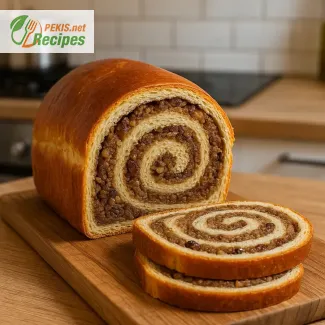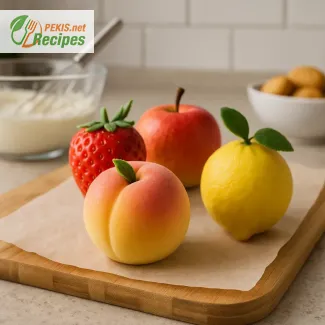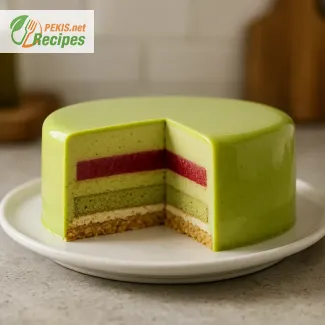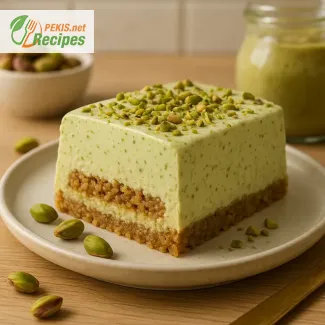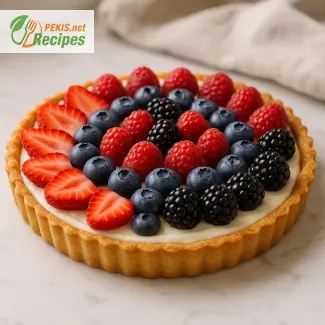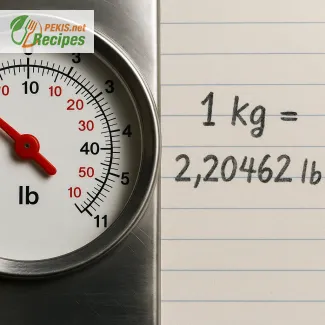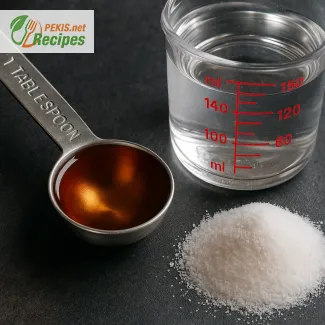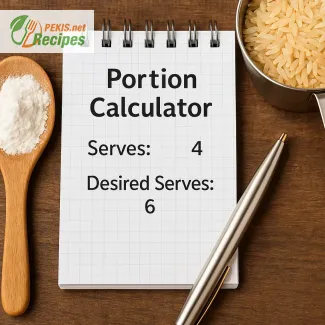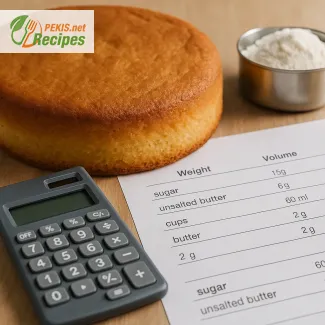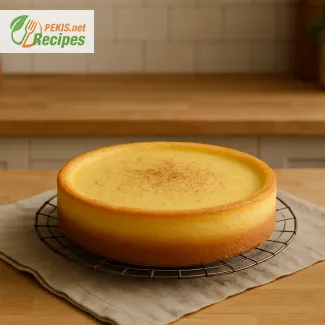
Discover the timeless charm of a silky egg custard cake
A traditional dessert with soft sponge and rich, creamy texture
Few desserts match the comforting nostalgia and delicate balance of a perfectly made egg custard cake. This classic treat is a staple in many households around the world, combining a light and airy vanilla sponge with a luscious layer of egg-based custard. It's the kind of cake that feels both rustic and elegant — ideal for Sunday family dinners, tea parties, or festive gatherings. The gentle sweetness, creamy interior, and subtle hints of nutmeg or vanilla create a multi-layered flavor profile that appeals across generations.
What sets this cake apart is the harmonious interplay between the sponge layer and the custard filling. While many cakes focus on sweetness alone, an egg custard cake offers depth, texture, and richness without becoming overwhelming. The custard, made from eggs, milk, sugar, and a touch of vanilla, creates a silky contrast to the fluffy base. It's light yet satisfying — a dessert that showcases simplicity elevated through careful technique.
Why egg custard cake remains a household favorite
There’s a reason this dessert continues to hold a place in both everyday baking and more refined menus. The ingredients are humble and accessible: eggs, sugar, flour, and milk — yet when combined properly, they deliver exceptional results. The custard’s creamy texture enhances the structure of the sponge, creating a mouthfeel that is both moist and smooth.
This cake is often associated with comfort and tradition, making it particularly popular in colder months when warm, oven-baked desserts become central to home-cooked meals. In some cultures, it’s served chilled in the summer, allowing the custard to firm up into a flan-like consistency, perfect for slicing and serving with fresh fruit or a drizzle of caramel syrup.
It’s also a versatile base for customization. You can infuse the custard with citrus zest, almond extract, or even cardamom for a unique twist. Some variations include a caramelized topping or a dusting of powdered sugar, but the core concept remains the same: soft, slightly sweet sponge paired with rich, creamy filling.
Key techniques for perfect texture
Achieving the ideal custard consistency is all about temperature control and balance. Overbaking can lead to curdling, while underbaking might result in a runny, unstable center. The custard should be set yet still jiggle slightly in the middle when you gently shake the pan. This ensures it will finish cooking through residual heat, staying soft but firm enough to slice.
Similarly, the sponge base should be well-aerated, often achieved through whipping eggs and sugar together until light and foamy before folding in sifted flour. This method guarantees a sponge that’s resilient enough to hold the custard, yet light enough to complement its creaminess.
Some bakers prefer to bake the entire cake in a water bath, especially when the custard layer is poured raw over the sponge before baking. This gentle cooking technique prevents cracks and promotes a uniform texture throughout.
Ingredients that make the difference
While simple on paper, the quality of your ingredients plays a vital role. Fresh eggs are essential — they provide structure and richness to both the custard and the sponge. Whole milk or a mix of milk and cream gives the custard its signature velvety finish. A touch of pure vanilla extract can elevate the aroma and flavor, while freshly grated nutmeg adds a nostalgic, bakery-style warmth.
Flour should be all-purpose and sifted to prevent clumping. Sugar can be white granulated or lightly golden, depending on your flavor preferences. Some versions also incorporate a buttery shortcrust base instead of sponge for a firmer bite — a nod to the popular custard tarts found in various regional cuisines.
Occasions and serving suggestions
This dessert’s versatility is part of its timeless charm. Serve it warm with whipped cream, cold with berries, or as-is for a minimalist presentation. It pairs well with coffee, herbal tea, or a light dessert wine.
In the UK, it’s reminiscent of the beloved custard tart, while in parts of Asia, versions of this cake feature steamed or baked custard within soft chiffon layers. Across Europe, many home bakers add this cake to their repertoire for Easter, Christmas, or everyday celebrations.
Whether you're an experienced baker or just starting out, this cake offers a rewarding baking experience with impressive results. Its soft texture, rich flavor, and elegant appearance make it a dessert that invites compliments — and second servings.
- Preheat the oven to 170°C (340°F). Grease and line a 20 cm (8 inch) round baking pan with parchment paper.
- In a mixing bowl, beat the eggs and granulated sugar until pale and fluffy (approx. 3–4 minutes).
- Sift in the all-purpose flour, cornstarch, baking powder, and salt. Fold gently to keep the mixture light.
- Add melted butter and vanilla extract to the batter, folding carefully. Pour into the prepared pan and level the surface.
- In a saucepan, heat the milk and heavy cream over medium heat until steaming but not boiling.
- In a separate bowl, whisk together eggs, sugar, and cornstarch until smooth.
- Gradually pour the hot milk mixture into the egg mixture, whisking constantly to temper the eggs.
- Return the custard mixture to the pan and cook over low heat, stirring until thickened (approx. 5–7 minutes). Remove from heat and stir in vanilla extract and a pinch of grated nutmeg.
- Carefully pour the warm custard over the sponge batter in the baking pan.
- Place the pan in a larger tray filled with hot water (bain-marie).
- Bake for 40 minutes until the custard is set with a slight jiggle in the center.
- Cool to room temperature, then chill in the fridge for at least 3 hours before slicing.
Enhance your homemade custard experience with creative twists
Practical techniques and expert tips for a more flavorful, healthier result
Elevating a classic egg custard cake from good to exceptional starts with understanding its structure: a silky custard layer nestled beneath or atop a light sponge base. This dessert, simple on the surface, offers tremendous room for personalization and refinement — both in flavor and nutrition. Whether you're aiming for a deeper aroma, improved texture, or a more health-conscious version, small adjustments can create remarkable differences.
Use high-quality ingredients for a richer taste
The base of any custard cake is built on a few fundamental components: eggs, milk, cream, sugar, and flour. Upgrading these elements transforms the entire dish. For example, using organic free-range eggs adds depth and a richer yellow hue to the custard, while raw cane sugar instead of refined sugar introduces a mild caramel undertone. Swap standard milk with full-fat Jersey milk for a creamier, more luxurious texture.
Choosing real vanilla bean paste instead of extract amplifies the aroma and visual appeal with specks of vanilla in the custard. A touch of lemon zest or orange peel adds brightness without overpowering the subtle egg flavor, offering a fresh, citrusy balance ideal for spring or summer servings.
Enhance the structure with smart flour alternatives
The sponge base can be delicate to master. While all-purpose flour is traditional, incorporating a portion of almond flour introduces a nutty warmth and slightly denser bite that complements the custard’s softness. Another option is spelt flour, which adds a mild earthy note and increases the fiber content, making it more satiating.
For those seeking a gluten-free version, a blend of rice flour, potato starch, and tapioca flour can mimic the sponge’s structure without compromising taste. To maintain lift, it’s essential to properly aerate the egg mixture and fold gently — a crucial technique regardless of flour choice.
Layered flavors with infused custards
The custard is where creativity truly shines. Infuse the milk with whole spices like cinnamon sticks, cloves, or star anise during heating, then strain them out before mixing with the eggs. This process creates a spiced undertone without changing the silky texture.
For a luxurious variation, blend in coconut cream or mascarpone cheese with the dairy base. Coconut adds tropical sweetness and richness, while mascarpone gives a dense, cheesecake-like finish. Another modern addition is salted caramel, folded gently into the custard or drizzled over the baked cake, creating contrast between the soft interior and bold topping.
Healthier ingredient swaps that don’t sacrifice flavor
To reduce saturated fat, replace part of the cream with low-fat milk or use Greek yogurt for a slight tang and added protein. Instead of granulated sugar, try maple syrup or honey in the custard, adjusting the quantity to balance sweetness and moisture.
Plant-based versions of this cake can also be successful. Use oat milk or almond milk, a cornstarch or arrowroot-based egg replacer, and vegan butter to create a dairy-free, eggless version. The result will differ in texture — often firmer — but still smooth and flavorful.
Homemade advantages over store-bought custard desserts
Making this cake at home ensures control over sweetness, quality of ingredients, and texture precision. Commercially prepared versions often contain stabilizers, artificial flavors, and excessive sugars. In contrast, homemade custard cake can be adjusted for dietary needs, made with fresh, pronounceable ingredients, and tailored to specific flavor preferences.
In addition, the baking environment at home allows for more delicate temperature control, which is crucial for achieving the perfect custard set — slightly jiggly, never curdled, and evenly baked.
Common mistakes and how to avoid them
Overbaking is one of the most frequent issues. If the custard becomes rubbery or cracks on top, the oven was too hot or the baking time too long. Always use a water bath and check doneness by gently shaking the pan — a soft wobble in the center indicates it's ready to cool and firm up in the fridge.
Another mistake is undermixing or overmixing the sponge batter. Both can deflate the structure. Whip the eggs and sugar until ribbon stage, then fold in dry ingredients slowly to preserve air. When combining the custard with the sponge, pour gently to avoid breaking the structure or causing uneven layers.
Presentation and storage matters
Let the cake chill for several hours before slicing for clean, sharp layers. Dust the surface with powdered sugar, garnish with fresh berries, or serve alongside a fruit coulis to enhance visual appeal and add contrasting acidity.
This cake can be refrigerated for up to three days, and in many cases, the flavor improves overnight as the custard sets and the sponge absorbs more of its moisture. Avoid freezing, as custard can separate upon thawing.
With thoughtful ingredients and attentive technique, the egg custard cake becomes more than just a nostalgic dessert — it evolves into a canvas for personal expression, seasonal flavoring, and culinary creativity.
Allergens present in the recipe:
- Gluten (from all-purpose flour)
- Eggs
- Milk (from milk, cream, and butter)
Allergen substitution tips:
- Replace all-purpose flour with gluten-free baking flour to make it gluten-free.
- Use plant-based milk (e.g., oat or almond) and dairy-free cream and butter alternatives to make it lactose-free.
- For egg allergies, substitute with a vegan egg replacer, though the texture of the custard may change.
Vitamins and minerals per serving (approximate):
- Vitamin A: 160 µg – supports vision and immune function
- Vitamin D: 1.2 µg – helps calcium absorption and bone health
- Vitamin B12: 0.9 µg – important for red blood cell production
- Calcium: 110 mg – essential for strong bones and teeth
- Iron: 0.9 mg – supports oxygen transport in the blood
- Magnesium: 14 mg – aids muscle and nerve function
- Phosphorus: 130 mg – assists in energy production and bone structure
Antioxidants per serving (approximate):
- Lutein + Zeaxanthin: 80 µg – support eye health
- Beta-carotene: 70 µg – converted into Vitamin A in the body
- Selenium: 6 µg – contributes to immune system and antioxidant defense

